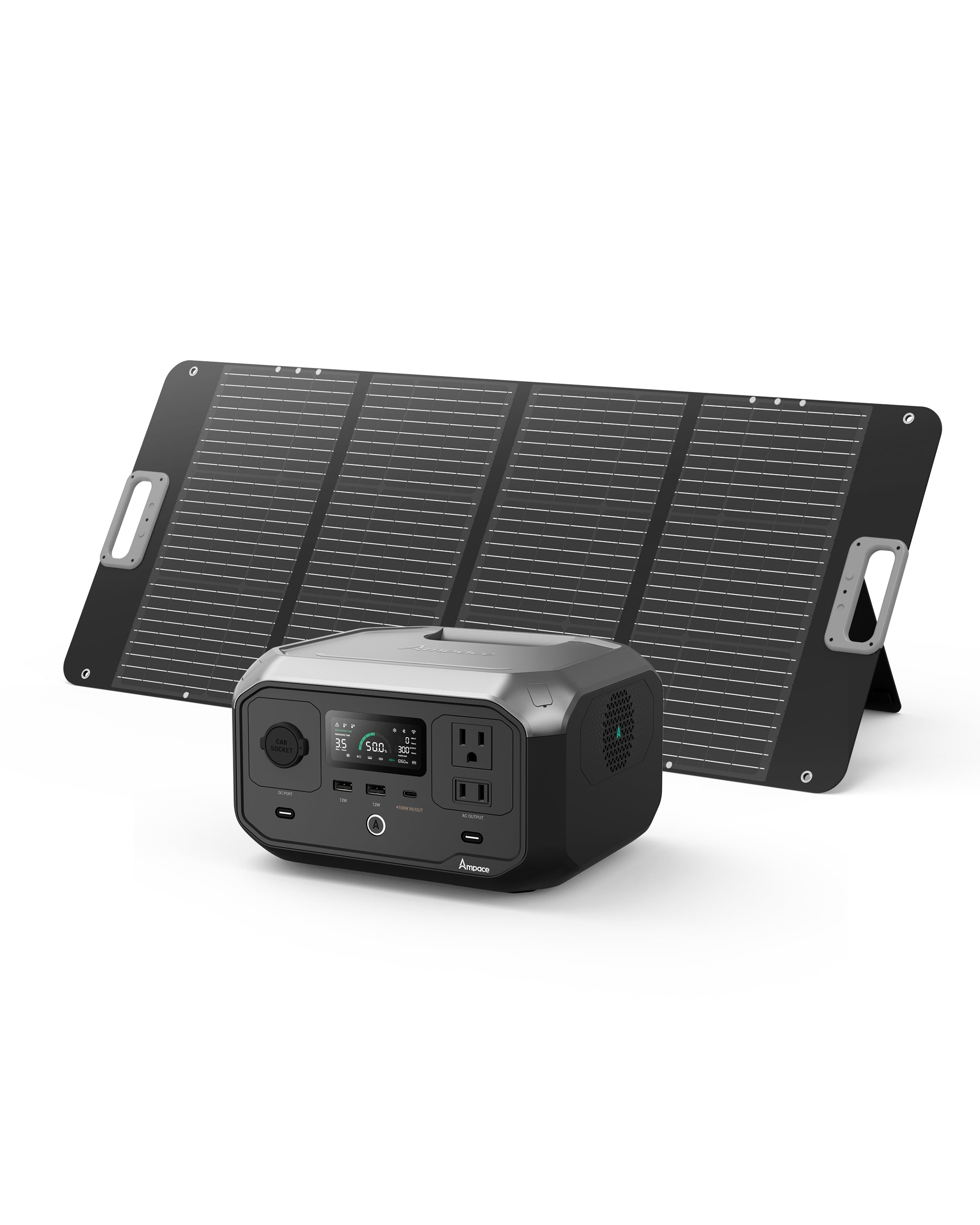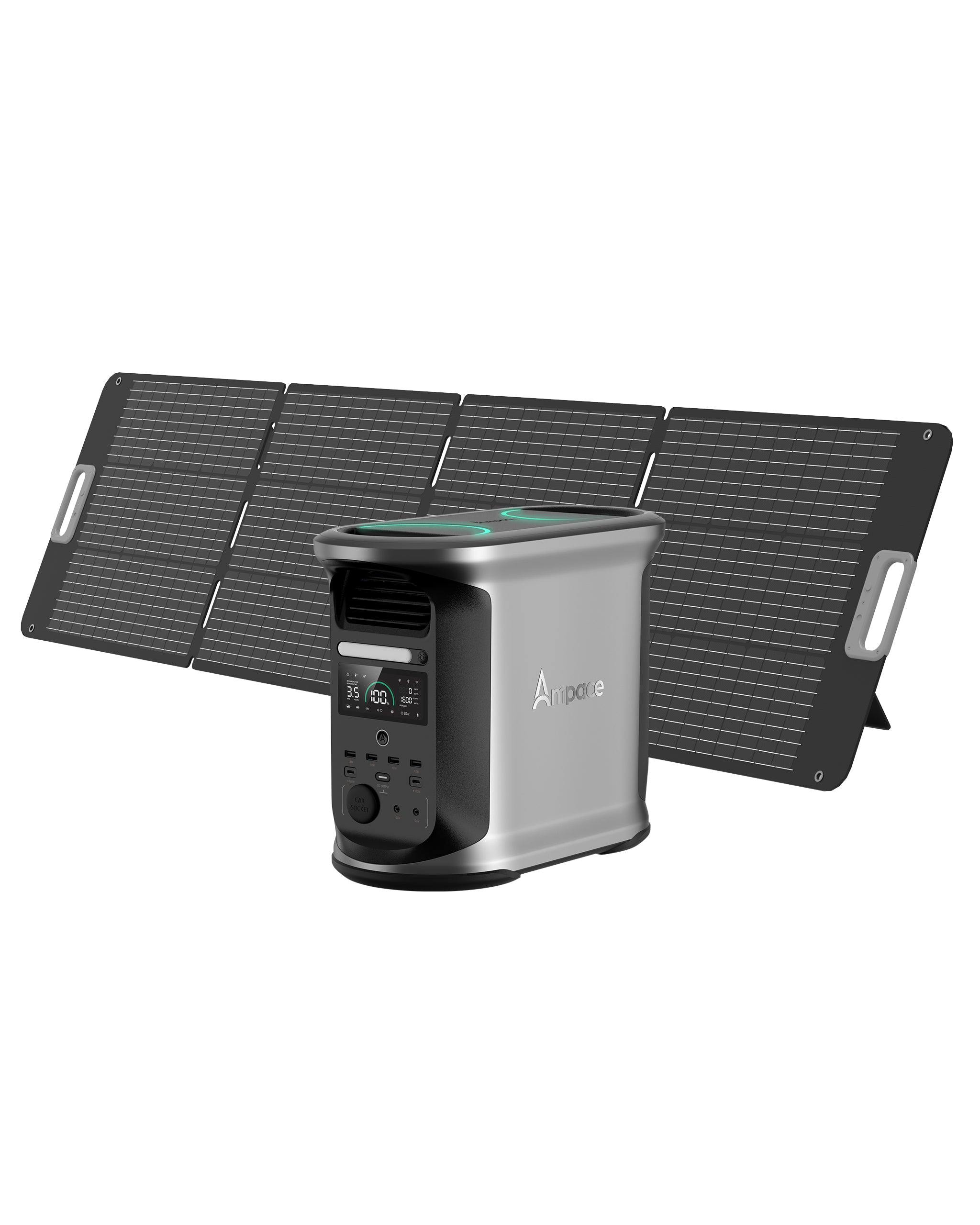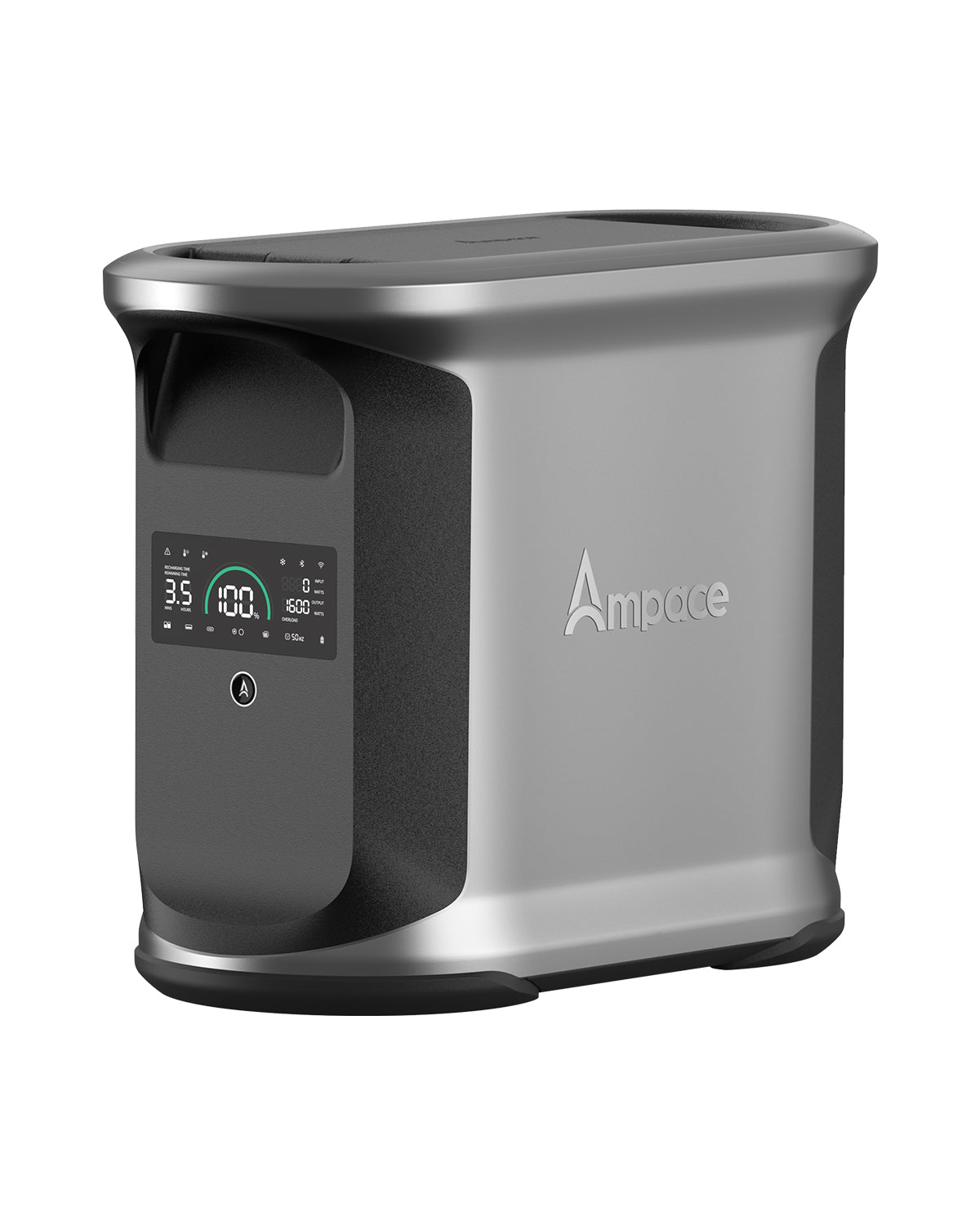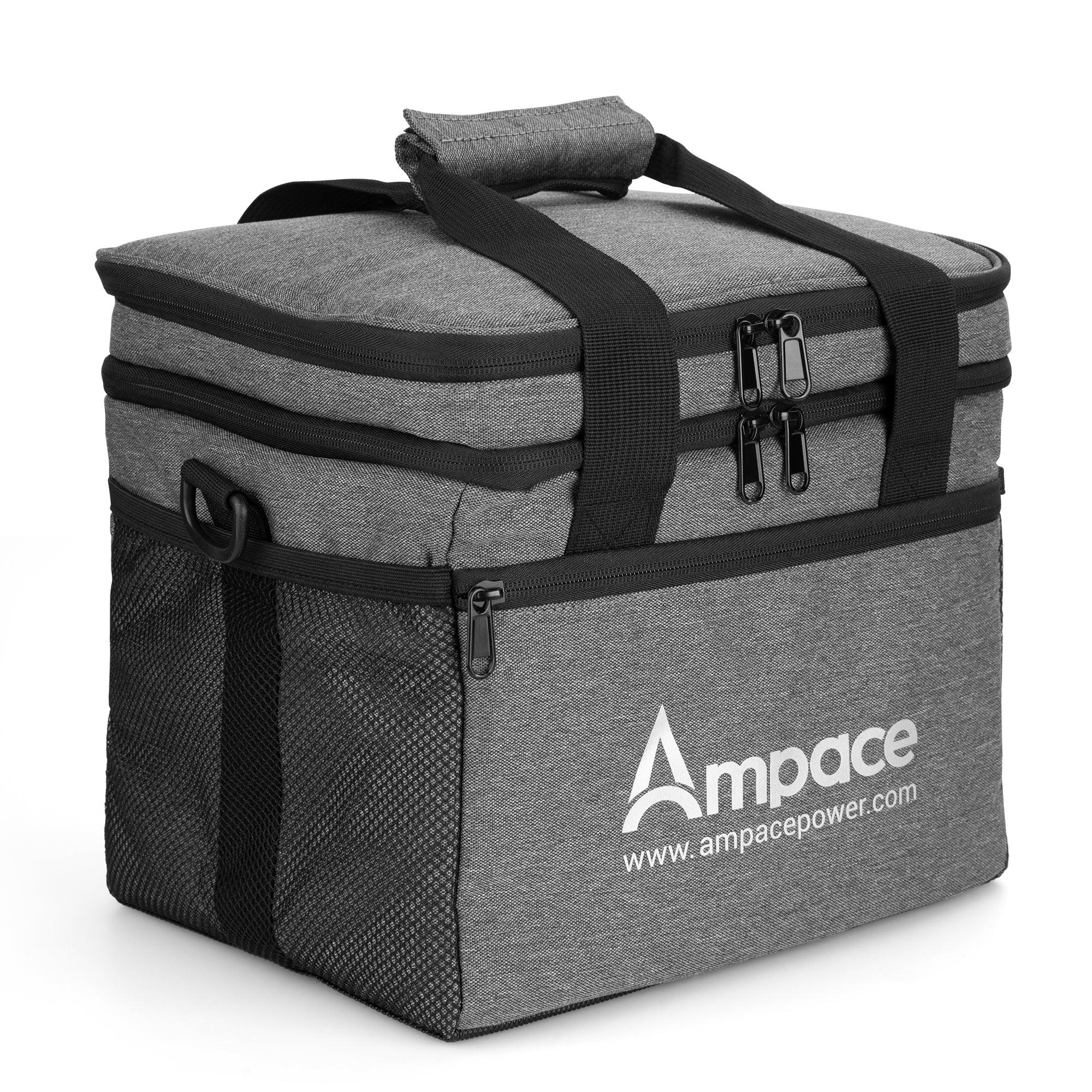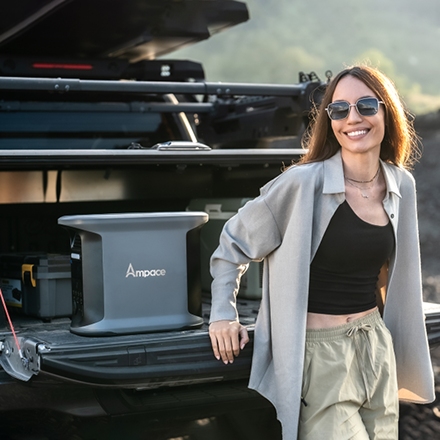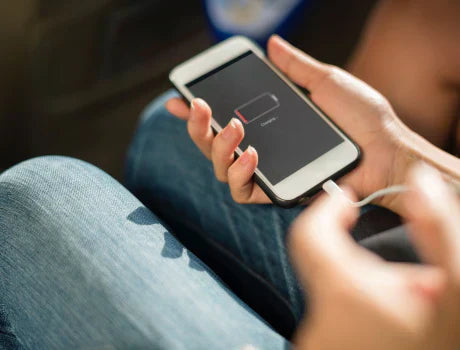What Makes Spring Suitable for Off-Grid Living?

Table of Contents
Spring is the ideal time to embrace outdoor freedom, especially when you choose an off-grid lifestyle, breaking free from traditional power sources to explore the great outdoors. Whether it’s a short weekend camping trip or an extended wilderness adventure, electricity is a key consideration for off-grid living.
Choosing an off-grid inverter allows you to explore nature while enjoying the tranquility of spring without sacrificing modern comforts. The Ampace solar power station provides clean, sustainable power, enabling you to use appliances even in an off-grid setup.
What Does "Off the Grid" Mean?
"Off the grid" refers to a lifestyle independent of public utilities such as electricity, water, gas, or sewage systems. Off-grid living relies on renewable resources—like solar power, wind energy, or rainwater collection—to meet daily needs. This sustainable lifestyle helps you unwind, forge a deeper connection with nature, and often appeals to those seeking liberation from urban infrastructure.
How Can You Live Off the Grid in Spring?
In the sunny days of spring, you can choose from various off-grid travel styles, freeing yourself from traditional power constraints and embracing nature’s endless possibilities. Equipped with solar panels and an off-grid inverter, you can live self-sufficiently, immersing yourself in spring’s vibrant energy and embarking on a journey deeply connected with nature.
- RV Camping : With an RV, you can comfortably travel to remote areas. Spring’s mild weather reduces the need for extensive heating or cooling, significantly lowering energy demands, while rainwater collection systems can easily replenish supplies. Perfect for those seeking mobility and home-like amenities.
- Van Life : Converting a van into a compact, self-sufficient home is popular among solo travelers or couples. Spring’s longer daylight hours provide ample solar energy for lights, fridges, or chargers, with solutions like the Ampace portable power station harnessing solar power to keep phones, laptops, and other devices running.
- Tent Camping : A quintessential off-grid experience, tent camping with off-grid gear suits adventurers who prioritize simplicity. Spring’s warmer temperatures mean you only need lightweight equipment, such as solar-powered lanterns, portable battery packs, and water purification tablets, to achieve complete self-sufficiency.

Off-Grid Travel Essentials
Shelter : Preparing your tent should be the first consideration for off-grid travel. Choose a tent that is compact and portable, easy to tilt and weather resistant, providing you with a safe place to rest outdoors
Power supply: Sufficient power supply to ensure the normal operation of your equipment. Outside, you still need to use electronic devices to live and stay connected. Solar panels with foldable panels and mobile charging stations provide power for phones and lights.
Water : Access to clean water is critical. A lightweight water bottle with a built-in filter lets you drink directly from streams or lakes, ensuring safe hydration on the go.
Food : Food needs to be simple and sustaining. Pack high-energy bars and dehydrated meals for quick nutrition, plus a compact gas stove for heating water or cooking a warm meal in minutes.
Waste Management : Keeping your campsite tidy is essential. Use durable, leak-proof waste bags to contain trash and human waste, and carry a collapsible shovel to bury waste properly, leaving no trace behind.

Off-Grid Solar Inverters: Powering Your Independence
An off-grid inverter is essential for converting direct current (DC) from solar panels or batteries into alternating current (AC) to run appliances. A good inverter should be efficient, reliable, and capable of handling your power needs. True sine wave inverters are best for sensitive electronics, while capacity (measured in watts) determines what devices you can use. Brands like Ampace stand out for their quality and versatility in off-grid setups.
Ampace Andes 300
Take a spring off-grid trip with the Ampace Andes 300 , a lightweight power station designed for outdoor activities and its compact structure makes it the perfect companion for spring camping or dealing with power needs in the wilderness.
-
Power & Charging: 266Wh capacity fuels phones, laptops, or small fans for spring outings. A-Boost technology charges to 80% in 45 minutes, fully in 1 hour. Six ports include 300W AC and 100W USB-C PD.
-
Durability & Design: At 3.7kg (8.2 lbs), its 2500-cycle battery lasts 10 years. Wi-Fi/Bluetooth app control and 2882 safety tests ensure dependable off-grid power.

Ampace Andes 600 Pro
Explore the beauty of off-grid spring with the Ampace andes 600 Pro , a versatile powerhouse designed for extended camping or RV travel experiences. Its powerful capacity and quiet operation allow you to enjoy the beauty of nature while keeping basic equipment powered.
-
Power & Charging: 584Wh capacity supports mini-fridges or laptops for spring adventures. Charges to 80% in 1 hour or 3-5 hours with 200W solar panel. Nine ports, including 600W AC (Surge 1800W), power 80% of devices.
-
Durability & Design: Weighing 7.6 kg (16.8 lbs), it features a 2000-cycle LiFePO4 battery, 95% efficient SiCPrime tech, and a 30dB quiet mode. Fireproof safety and 20ms EPS switch ensure reliability off-grid.

Ampace Andes 1500
Welcome the call of spring with Ampace Andes 1500 , a high-capacity off-grid inverter for off-grid travel, RV travel, emergency shelter, and more. Its high capacity and rugged design keeps your equipment running, allowing you to fully immerse yourself in the spring scenery without having to worry about a power source.
-
Power & Charging: 1462Wh capacity with 2400W output (Surge 3600W) runs most of appliances, from fridges to tools. Charges in 55 minutes or 3-5 hours with 600W solar across 13 ports.
-
Durability & Design: 6000-cycle LFP battery lasts 10+ years. Wi-Fi/Bluetooth control, 20ms UPS, and UL-certified build ensure robust off-grid performance.

FAQs About Off-Grid Living
What does off-grid living mean for spring travel?
It means relying on portable power sources to stay independent from the electrical grid, powering devices during spring camping or RV trips.
How can I live off the grid during spring travel?
Use a portable power station like the Andes 1500 with solar panels to charge phones, fridges, or lights sustainably in remote spring locations.
Is off-the-grid living illegal when traveling?
Off-grid travel is generally legal, but check local regulations for camping or solar panel use on public lands during spring trips.
What is a solar inverter in portable power stations?
A solar inverter converts DC power from solar panels to AC, enabling you to run household devices during off-grid spring adventures.
How do I select a solar inverter for off-grid travel?
Choose a power station with a built-in inverter that matches your devices’ wattage and supports solar input for efficient spring travel power.
Read More
How to Power Your Drone with a Portable Station?
Three Best Small Solar Generator For RV Trip
Breaking Down the Costs of Life on the Road: Full-Time RV Living
The Two Best Portable Solar Panels 2025 Updated
Embrace Off-Grid Living with Solar-Powered Cabins





